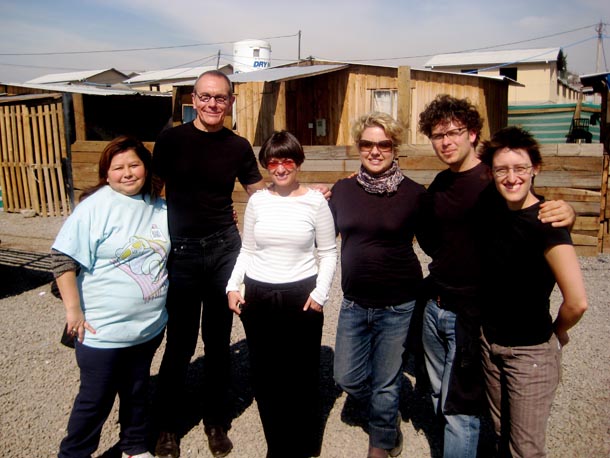Two of our fall project collaborations were launched this past month of August with several days of immersive field research in rural villages outside Antigua, Guatemala, and slum communities in the southern outskirts of Santiago, Chile.
An upcoming post will provide a closer window into the work of the five Art Center students and Photo Department faculty member Sharon Cavanagh, who joined the Caltech and Landivar University students in a week of field research in Guatemala that took them deep into Mayan rural settlements for the Design for Development class at Caltech.
In Chile, the hospitality extended by our partners led by Programa Mínimo Founder Julián Ugarte at the Innovation Center of the NGO Un Techo Para Chile, offered our multidisciplinary team of twelve students/ and three faculty (Penny Herscovitch & Daniel Gottlieb from Environmental Design, and Liliana Becerra from CMTEL/Product Design), of the Safe Aguaproject invaluable access to a better understanding about daily life in the campamento San José. Twenty families generously opened their homes to us for a learning journey into what it takes to accomplishing quotidian tasks without running water. These families live in a transitional settlement made of modest wood structures, each known as a “media agua,” that Techo helps secure with government subsidies. Most impressive about Techo’s work: (which started in Chile in 1997 rallying young university student volunteers, and now continues spreading throughout Central and South America; fifteen country chapters–see Un Techo para Mi Pais they go beyond an organization that seeks to end slum dwelling conditions, they facilitate the social integration and capacity building it takes to help these families conquer urban poverty and secure permanent homes.
Techo’s work is so deeply impactful and presents so many opportunities for design innovation, that I would be remiss to do it justice with any summary recap. Instead, as I survey the mounts of photos, data collection, research outcomes and initial design directions of the team, and proudly review the Chilean national press articles (Santiago Times, El Diario Diseno, La Tercera, El Mercurio) that chronicled our presence with this extraordinary community, it is the quiet conversations and more personal exchanges that I partook in that stay with me. All of us unanimously returned to Pasadena transformed in so many positive ways by the experience, touched by new friendships, and a resolute sense of responsibility that we can meet and exceed the promise of this collaboration.
We simply have to.
For the educational success of the project, and for Rosita Reyes–the inspirational community leader of the campamento San José–who keeps the star-studded Chilean flag flying high on the roof of her media agua as a symbol of her conviction and dreams for a better tomorrow: the day when the whole community will move to permanent homes. I see her contagious smile and hear her still as she tells me: “Este es un campamento con sueños”: this is a community with dreams.
And the great poet/songwriter Silvio Rodriguez’ guitar and verses from En Busca de un Sueño(Descartes album) resonate with new meaning as well:
En busca de un sueño– van generaciones,
en busca de un sueño, hermoso y rebelde,
en busca de un sueño, cuántas ilusiones….
(In search of a dream, generations go, in search of a dream, beautiful and rebellious, in search of a dream, so much hope…)



